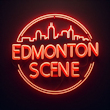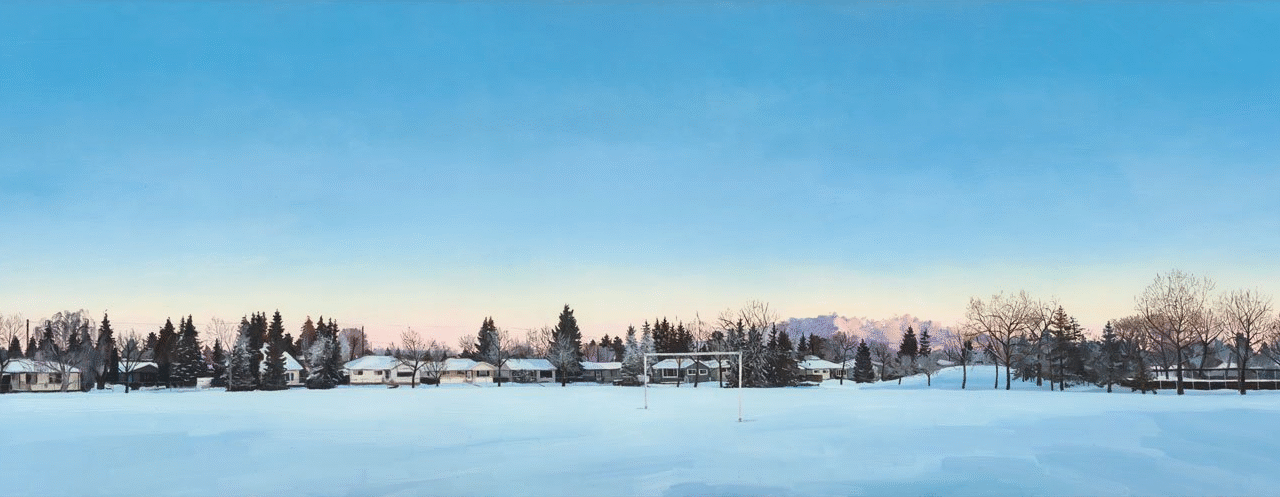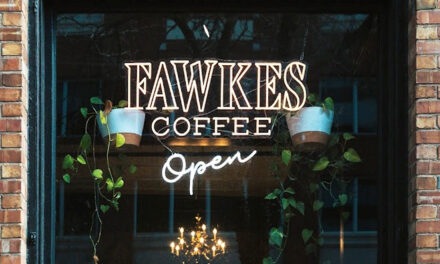Review by Mark Morris
(all photos are of the actual art work photographed at the Art Walk)
The biggest of Edmonton’s art walks, that at Whyte Avenue, turned 30 this year, and celebrated from July 11 to 13 with its largest show yet, that included sand sculpture alongside the visual arts, the crafts, and the music dotted around here and there. With artists’ booths stretching along 83 Avenue from the Farmer’s Market, curling around Dr. Wilbert McIntyre Park, and crossing Calgary Trail to an area devoted to jewellery and crafts, it was packed as I have seen it on the hot Sunday morning that I went – the last day of the show.
The variety in the Art Walk, both in artistic subject matter, and, to a lesser extent in quality, is considerable. My particular interest is in landscape painting, a subject-matter that inevitably, given our proximity to the staggering scenery of the mountains and the wide expanses of the Albertan prairie, is exceptionally well represented in all Albertan art. The Art Walk is no exception, though here that variance in quality is pronounced. So I went searching for interesting landscape art that went further than the purely decorative, but strove to tell us something about how we are and how we interact with our landscape, and, ideally, made us look at our landscapes from a new angle. As usual, there was plenty to see.
Mountains of course did dominate. One of the best Edmonton painters of mountains – usually from a foothills view point – is Samantha Williams-Chapelsky. As the very large canvases in her recent exhibition at the University of Alberta Hospital Gallery showed, she is now painting with a new-found freedom, fluidity, and energy. She is currently an Alberta Artist-in-Residence, and is doing a really wonderful series of 100 smaller-scale paintings of landscapes from around the province. I didn’t see any of these at the Art Walk – you can view them at https://samanthawilliamschapelsky.com/albertas-artist-in-residence/ – but she did show examples of that new fluidity and expressiveness.

A name new to me was that of Joe Reimer. His brightly-coloured, large-scale pointillist mountains scenes were attracting quite a lot of attention. It was easy to see why, with their over-exaggerated colours creating a heightened vividness, most successful when the exaggeration wasn’t taken too far (https://fineartamerica.com/profiles/2-joe-reimer).
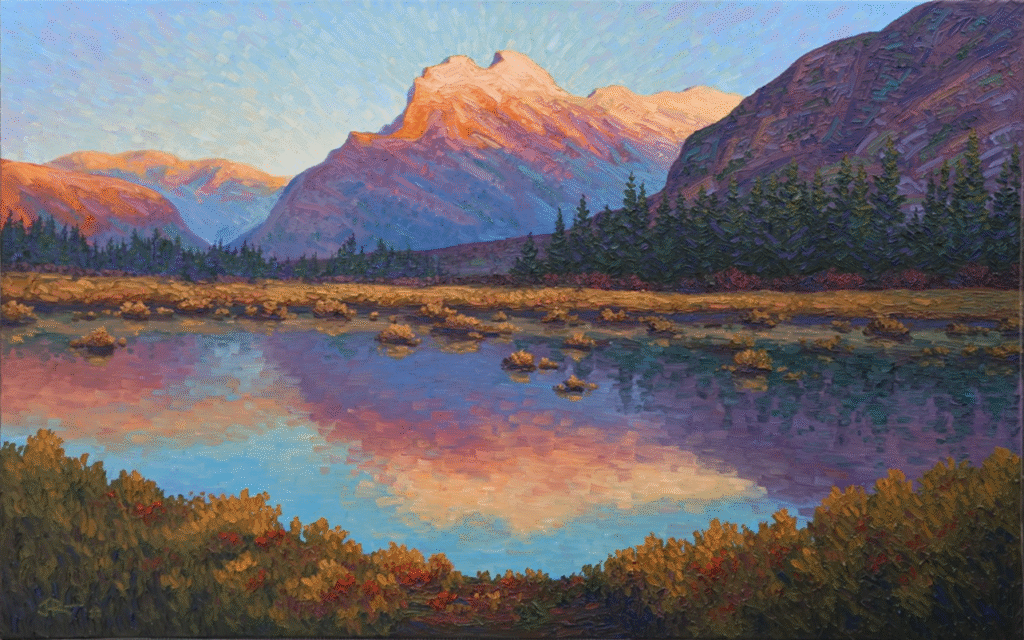
Another artist new to me was Alexandria Mackie, who has been painting for only five years. She showed some very effective mountain paintings, starkly painted in a style that just put it beyond the photographic. She also showed some mountain paintings where collage figures had been inserted – these seemed out of place, however much they may have expressed personal stories, as the unadulterated mountain paintings were so strong. More successful was her design for an Alley Cat beer can – great to see Alberta breweries collaborating with Alberta artists! (https://www.alexandriamackie.com)
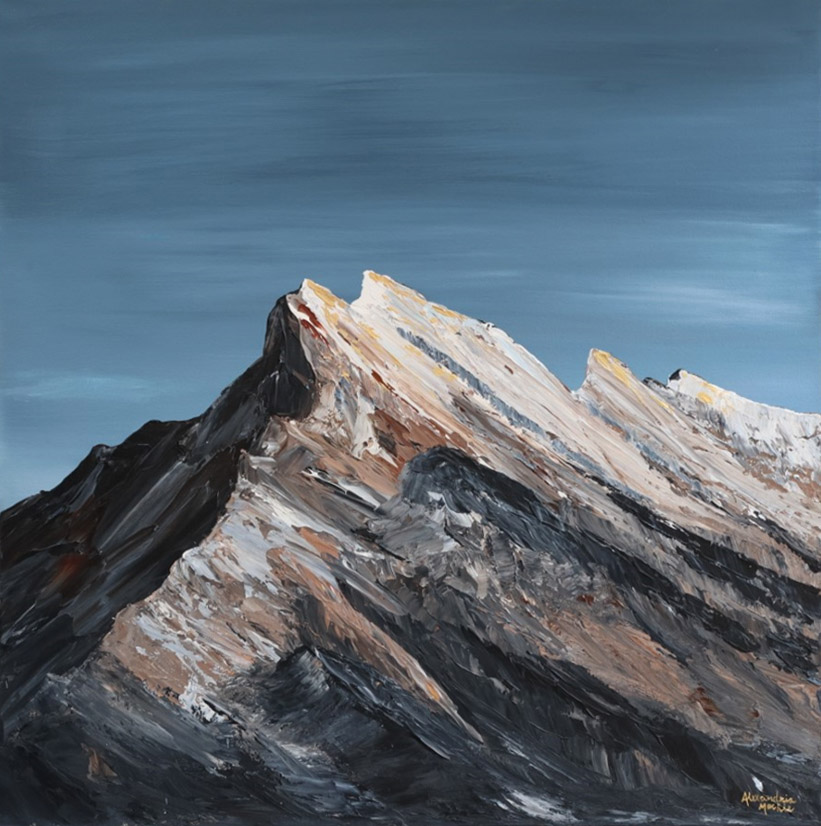
Charlene Wildeman’s landscapes are expressive, almost abstract, best when the one feels there are tensions in the subject – one can feel the storm in her After the Bloom (https://www.charlenewildeman.com). Sabine Hahnel, who lives on a bison ranch near Two Hills, and who concentrates on usually vividly coloured scenes from an Alberta outside the mountains, gave life – and a different feel – to aspen woods (there were an awful lot of aspen woods in the Art Walk, almost all best forgotten) (https://www.sabinehahnel.com).
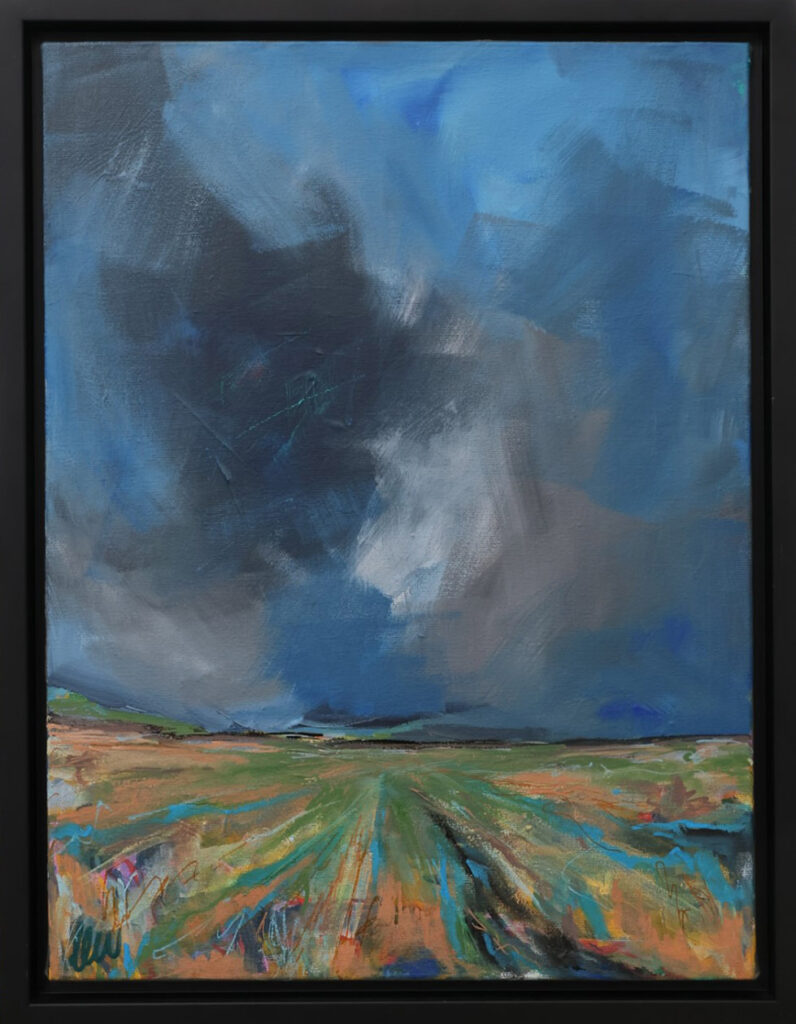

Ian Sheldon once again showed at the Art Walk – he first took part in 1996, in the event’s second year, and is probably the Art Walk’s best-known artist. His semi-abstract landscapes and skyscapes, with their almost rigid sense of the horizontal line, are familiar and widely appreciated. He is now based in Jasper (https://www.iansheldon.com).
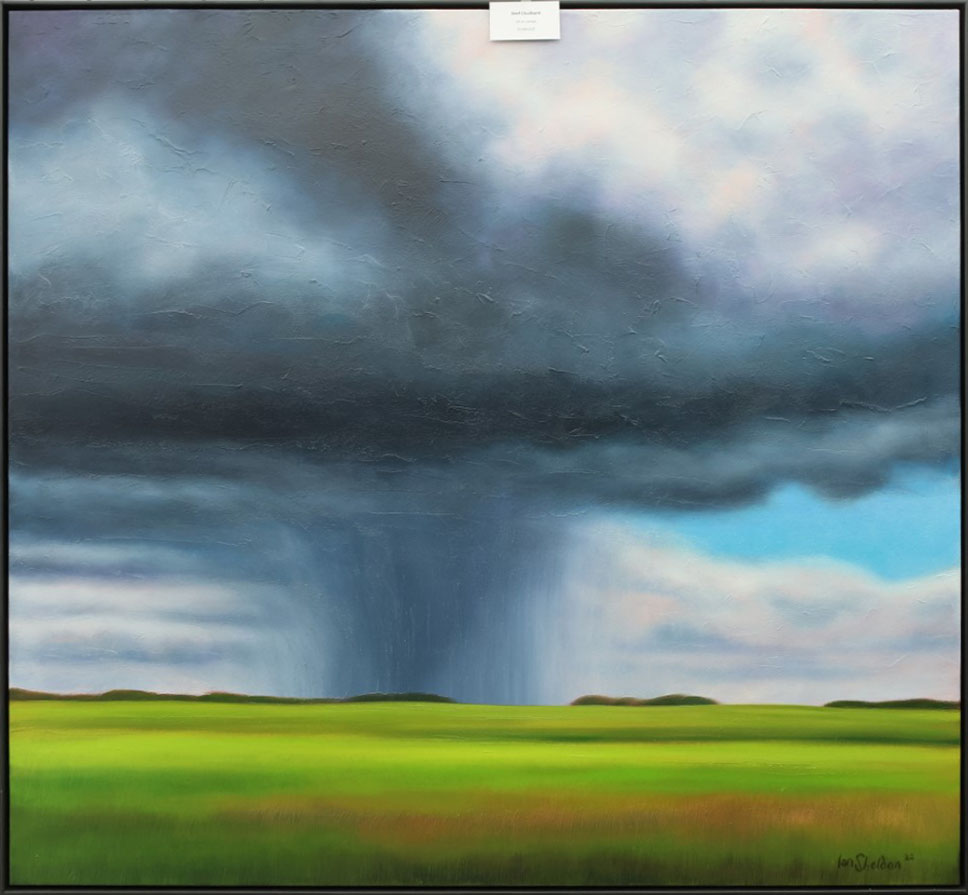
There were plenty of interesting landscapes that were more overtly stylized. Robin Light is best-known for her often quirky and always attractive paintings of urban houses and landscapes around her Edmonton home, but she was also showing landscapes from further afield, ranging from an attractive little oil of snowy Ontario fields, to much larger works (https://www.facebook.com/robinlightpaints).

Patrick Markle’s entertaining landscape paintings have a 1930s feel to their stylization (think Hobbit illustrations) (patrickmarkle.com), while Eun Mee’s abstract paintings are clearly inspired by landscape shapes (https://eunmeestudio.com). Her Distant Land was completed this last New Year’s Day.
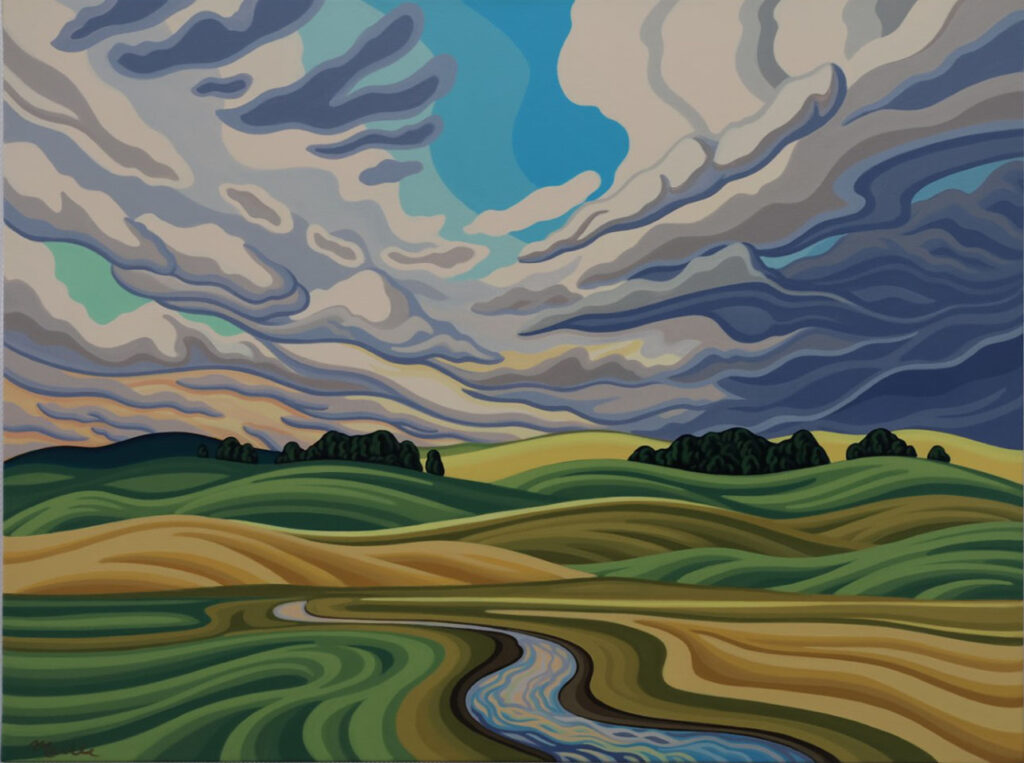
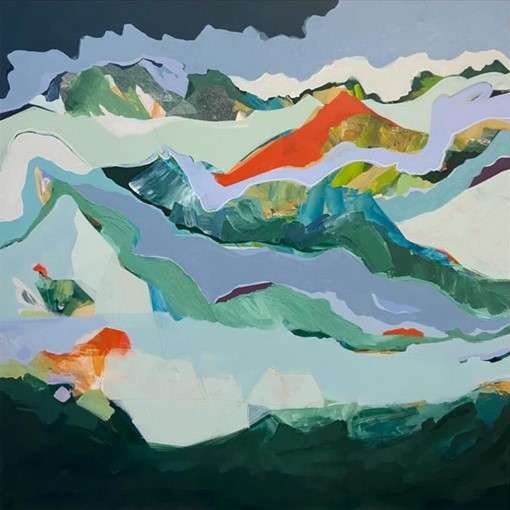
Rather surprisingly, since the style is popular outside Alberta, I saw only one artist showing landscapes in a hyperrealism style, and very effective they were. Ashley Thimot paints urban landscapes with an almost photographic realism, while maintaining just enough sense of paint and personal creation to ensure that they are more than photographic, and she sees the magic in what might otherwise be taken as mundane scenes (https://www.ashleythimot.com).

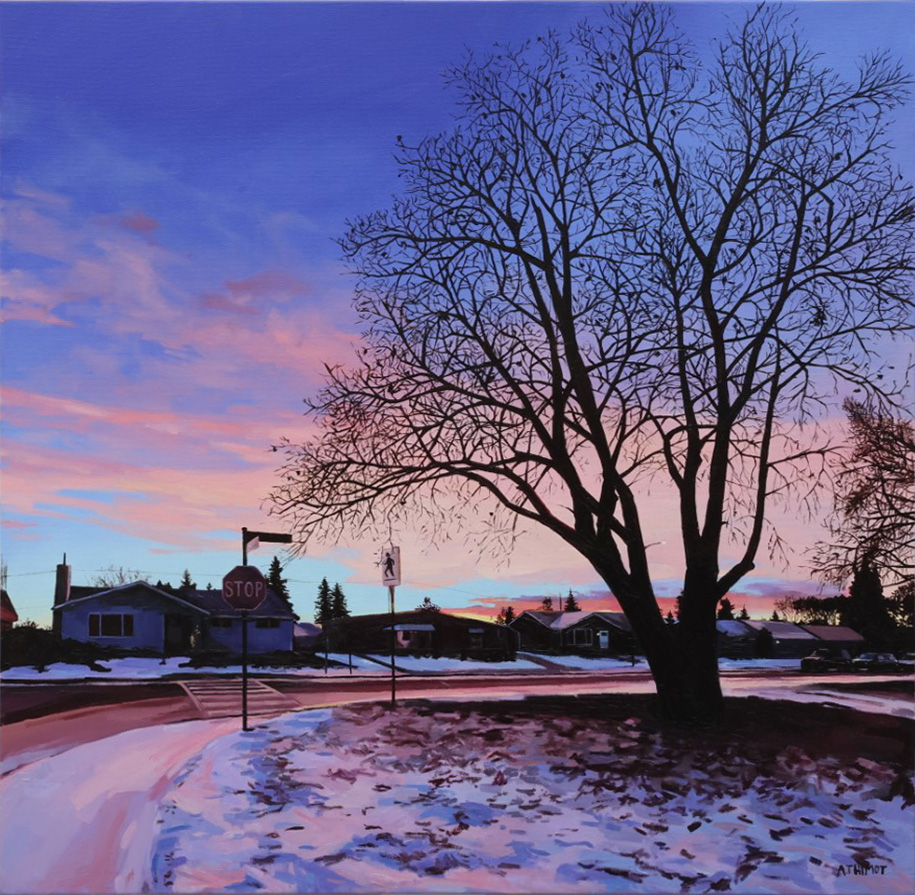
Vermilion-based Justina Smith’s colourful paintings cover a wide range of subjects, from rural Albertan life to landscape vistas, but some of her best work is her city and interior paintings – she has done an evocative series of paintings of Edmonton over the years, and really has an eye for the possibilities in street and house scenes. She was showing a couple of recent Edmonton paintings, including an evening view of Jasper Avenue – one of her quirks is the presence in almost all of her painting of whirligig geometric shapes, which sometimes can appear too obtrusive, but which were neatly integrated here (https://www.justinasmith.com).
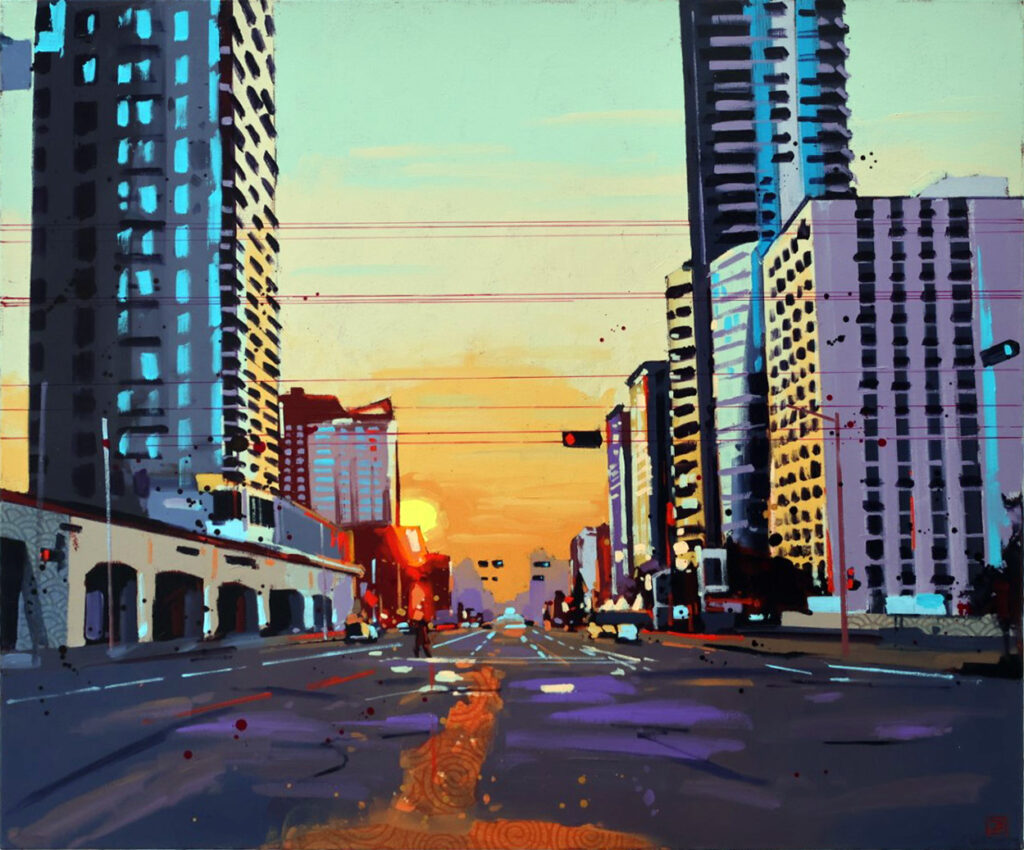
As usual, many of the artists had prints of their original work for sale – a bread-and-butter income source in an Art Walk like this – and I heard one or two complaints that it was more difficult to sell the larger paintings this year, though I could not confirm this generally. Prices seemed little changed from last year, with most of the larger oils selling for $2500 – $3500, smaller ones $200 – $500, and prints from $100 to $250.
Many of the artists will be showing again in the second major art walk in the city, the Strathearn Art Walk and Music Festival, which runs from September 5 to 7 (https://www.strathearnartwalk.com).
Whyte Avenue Art Walk
July 11 – 13, 2025
website
